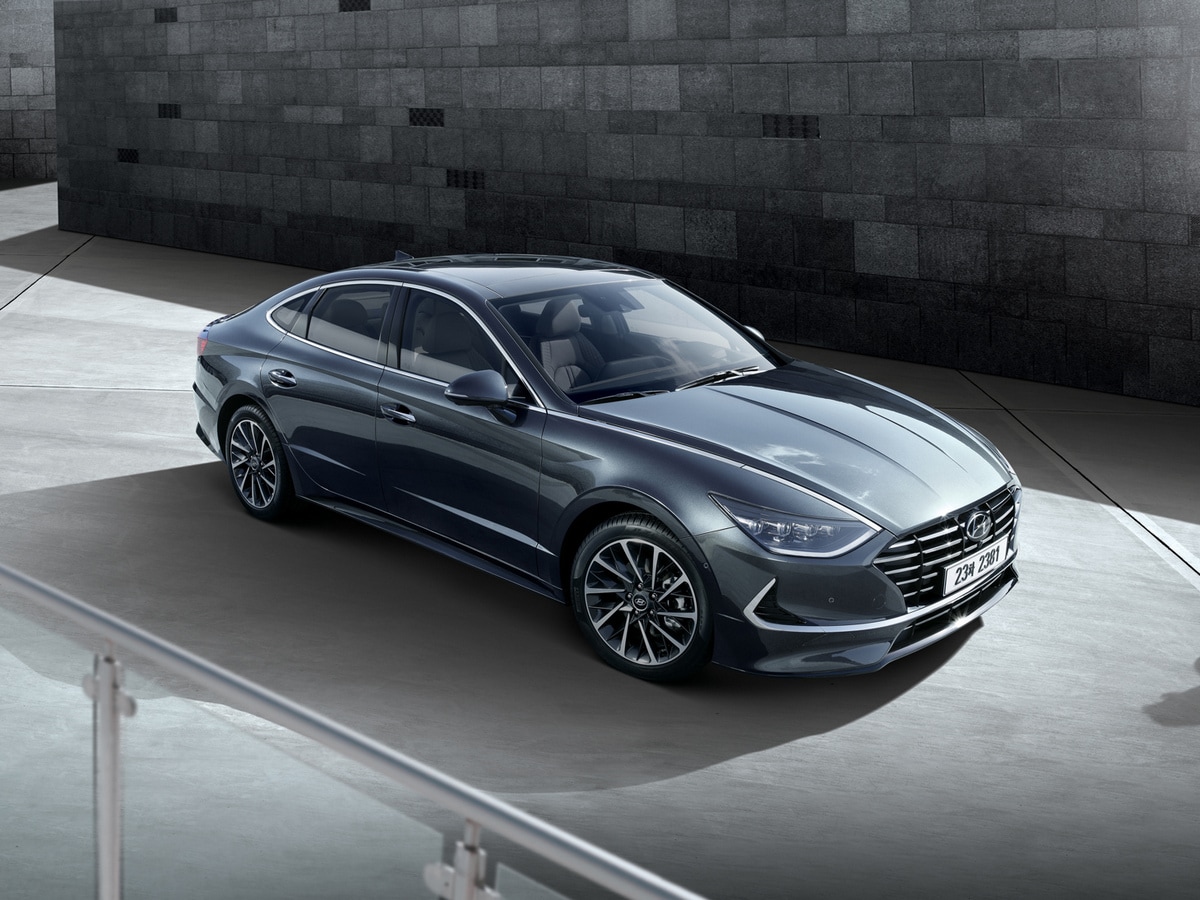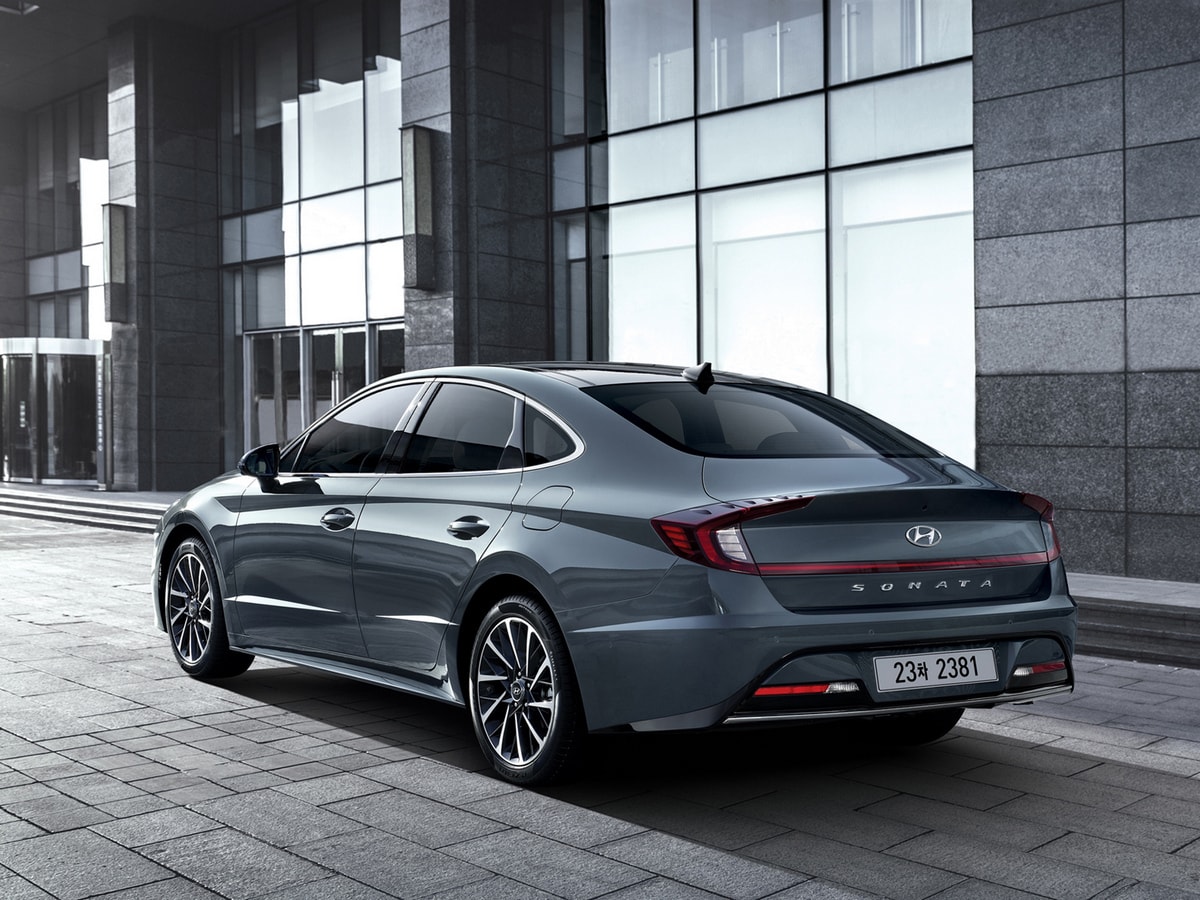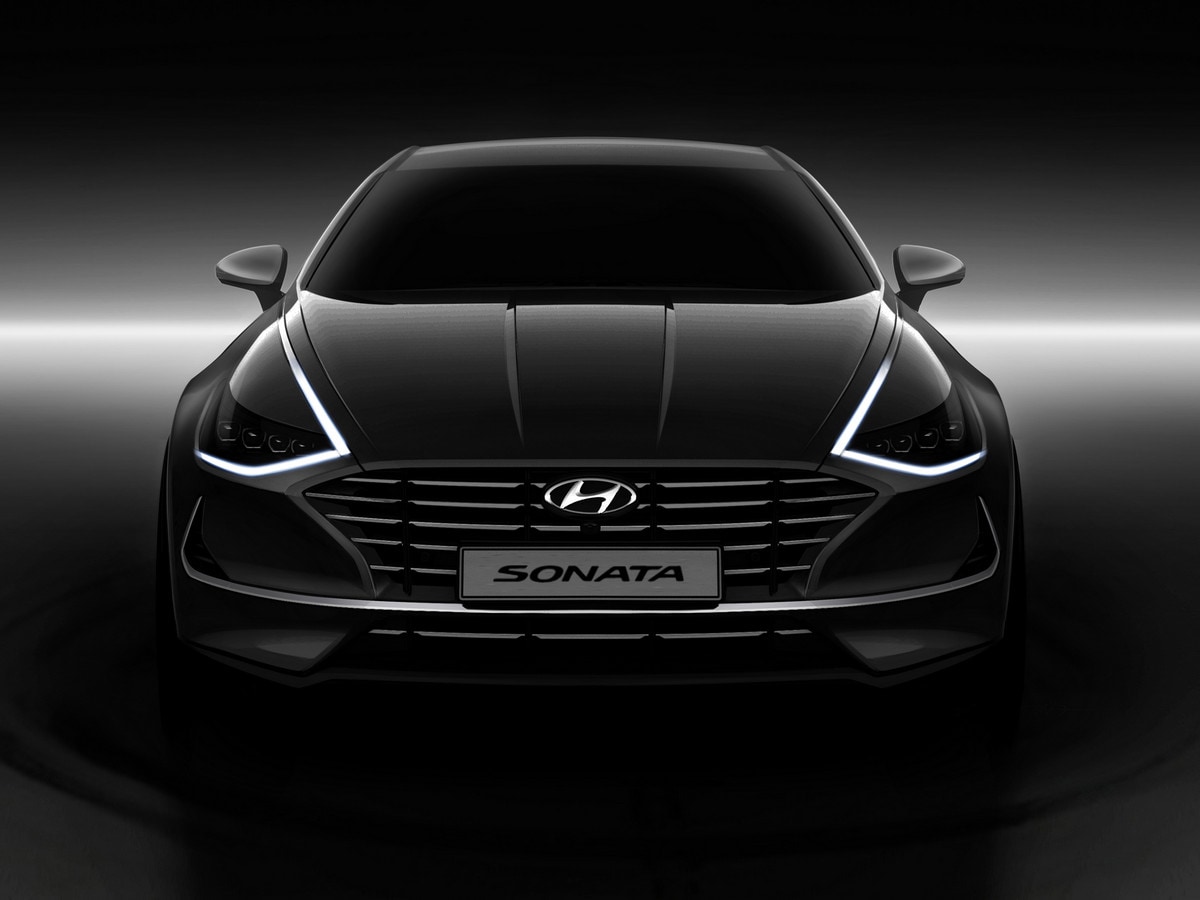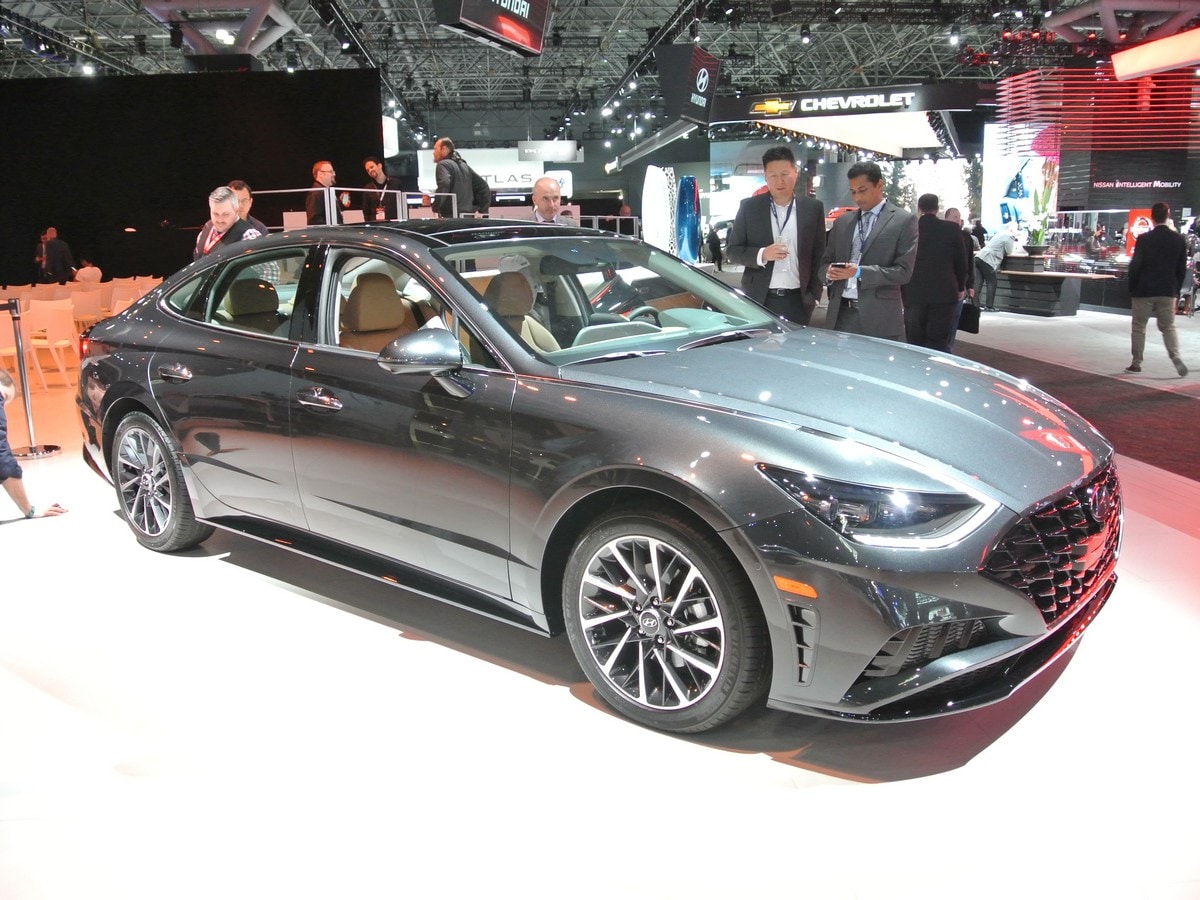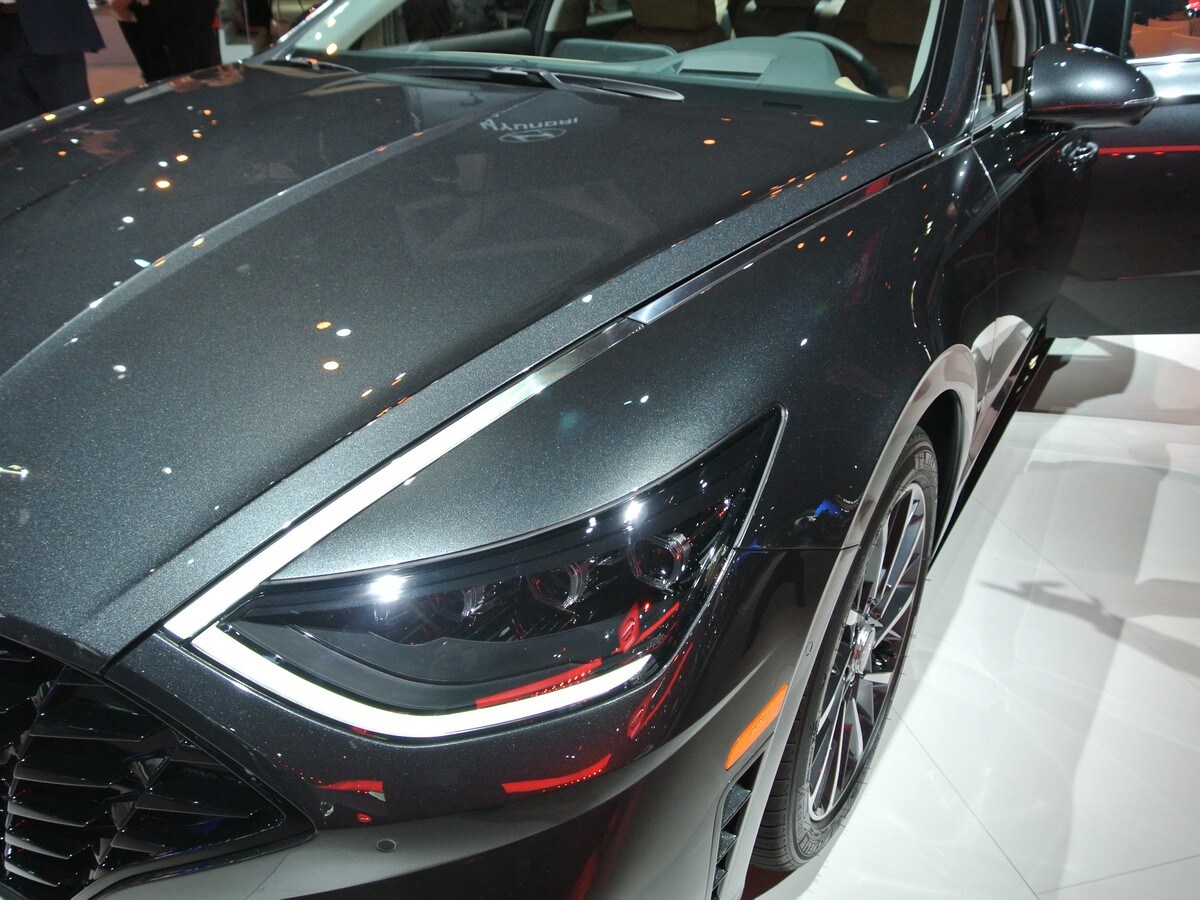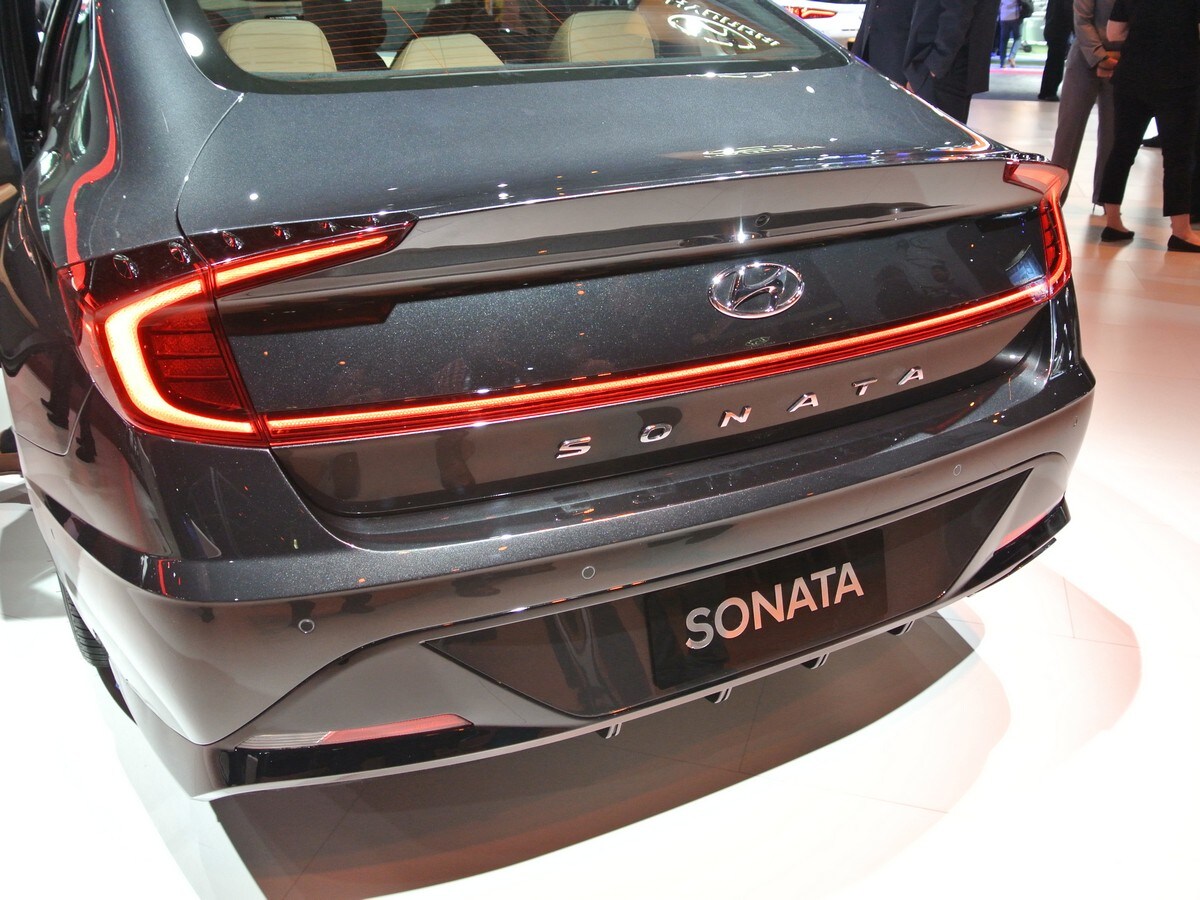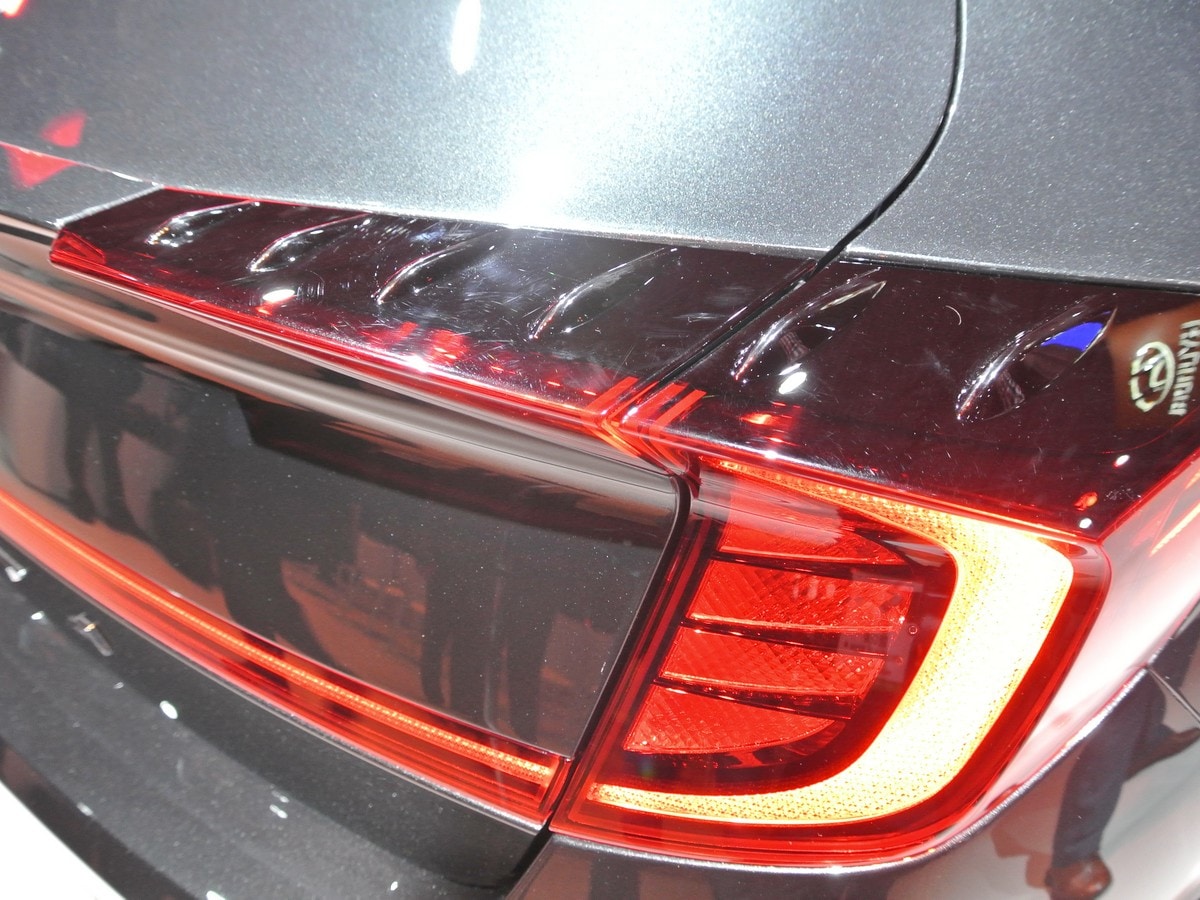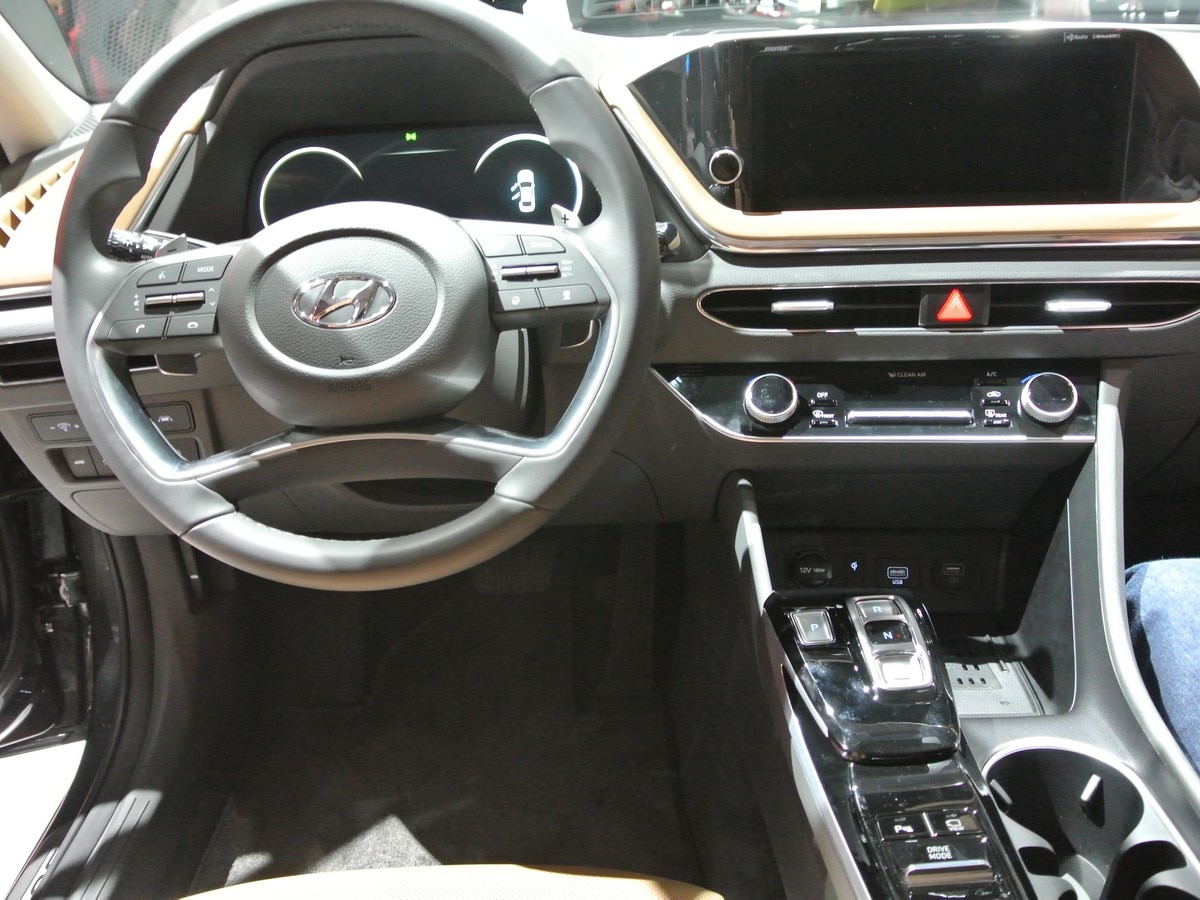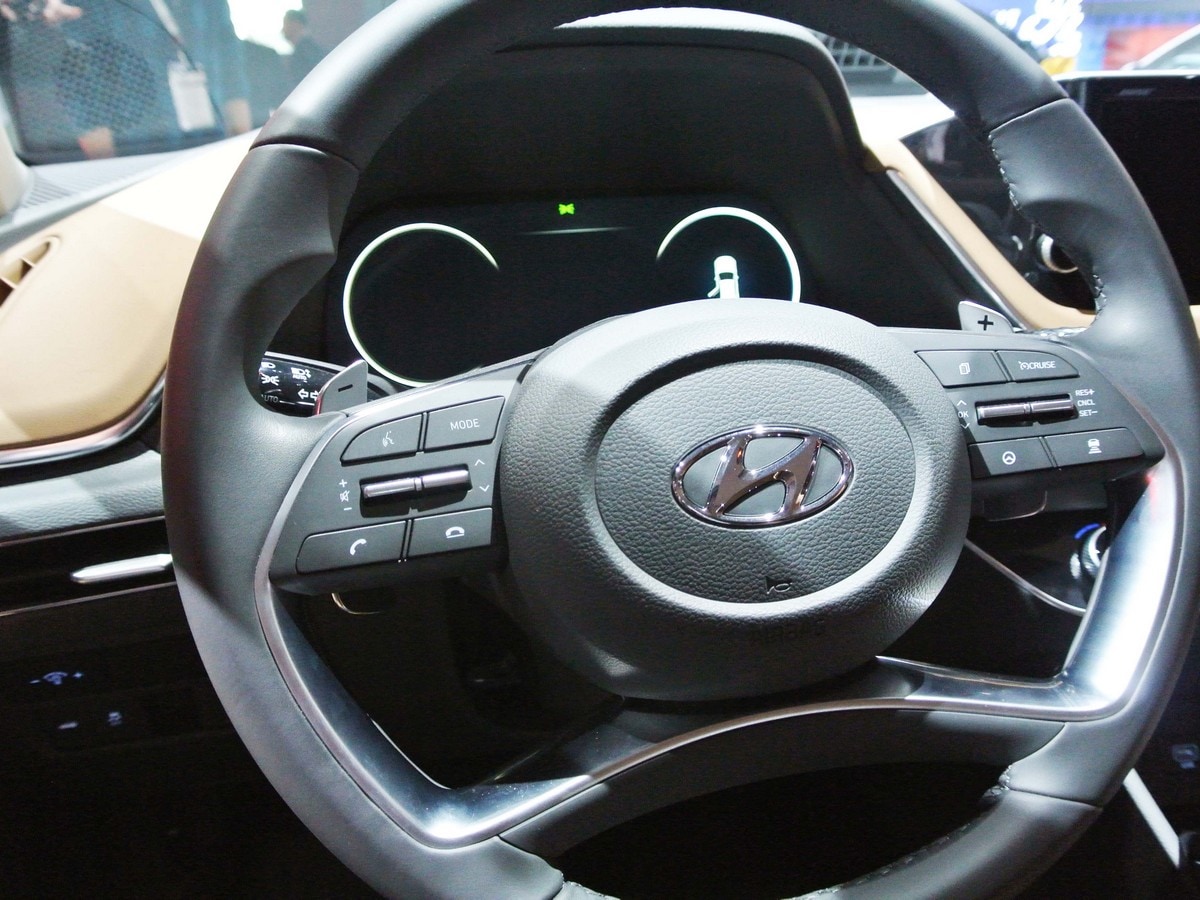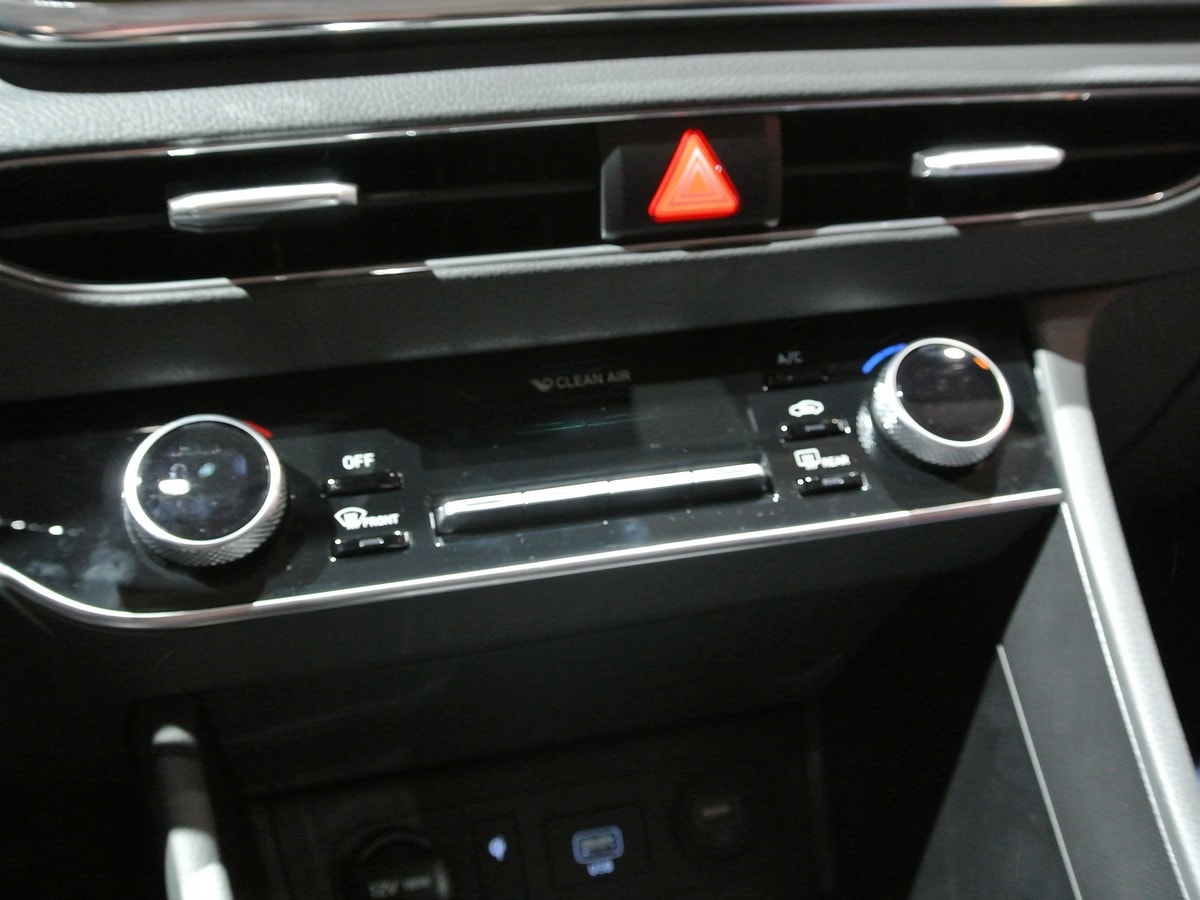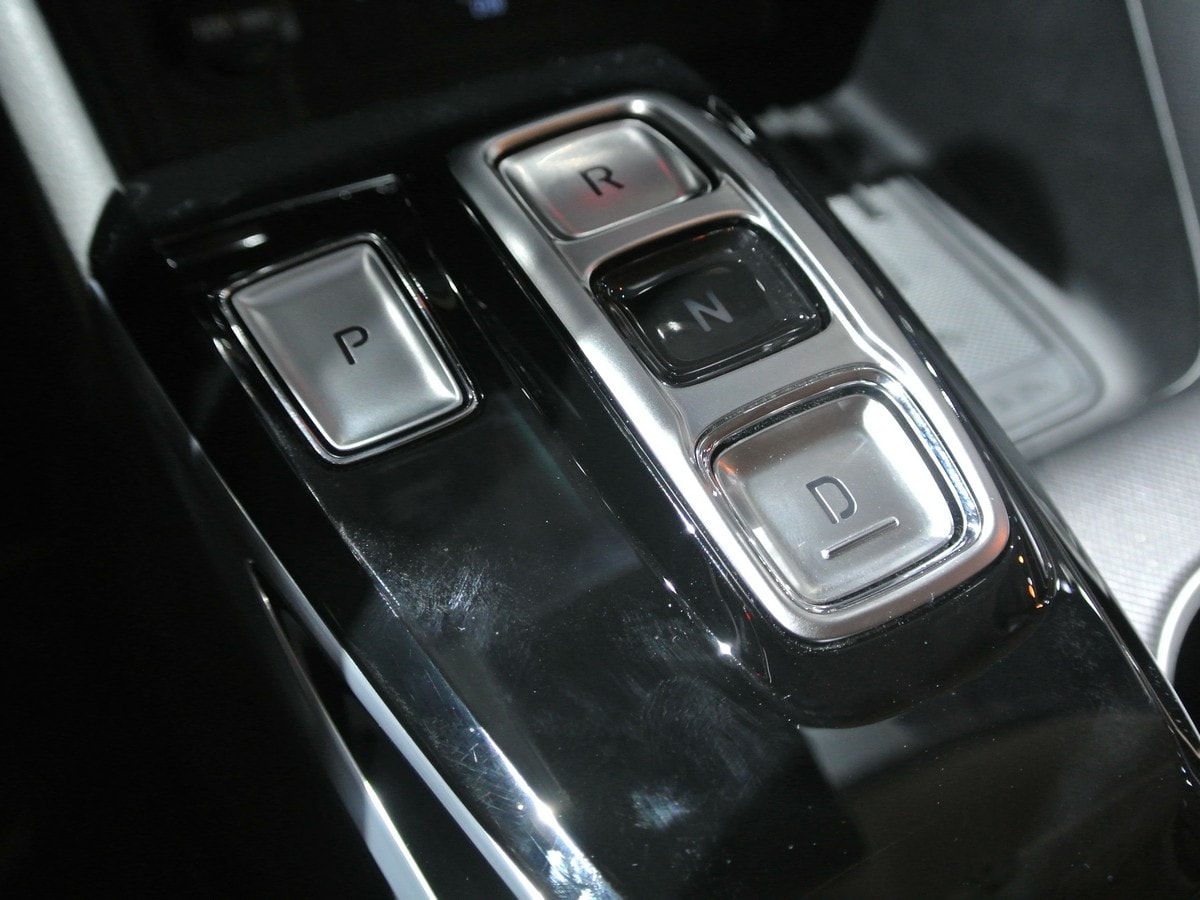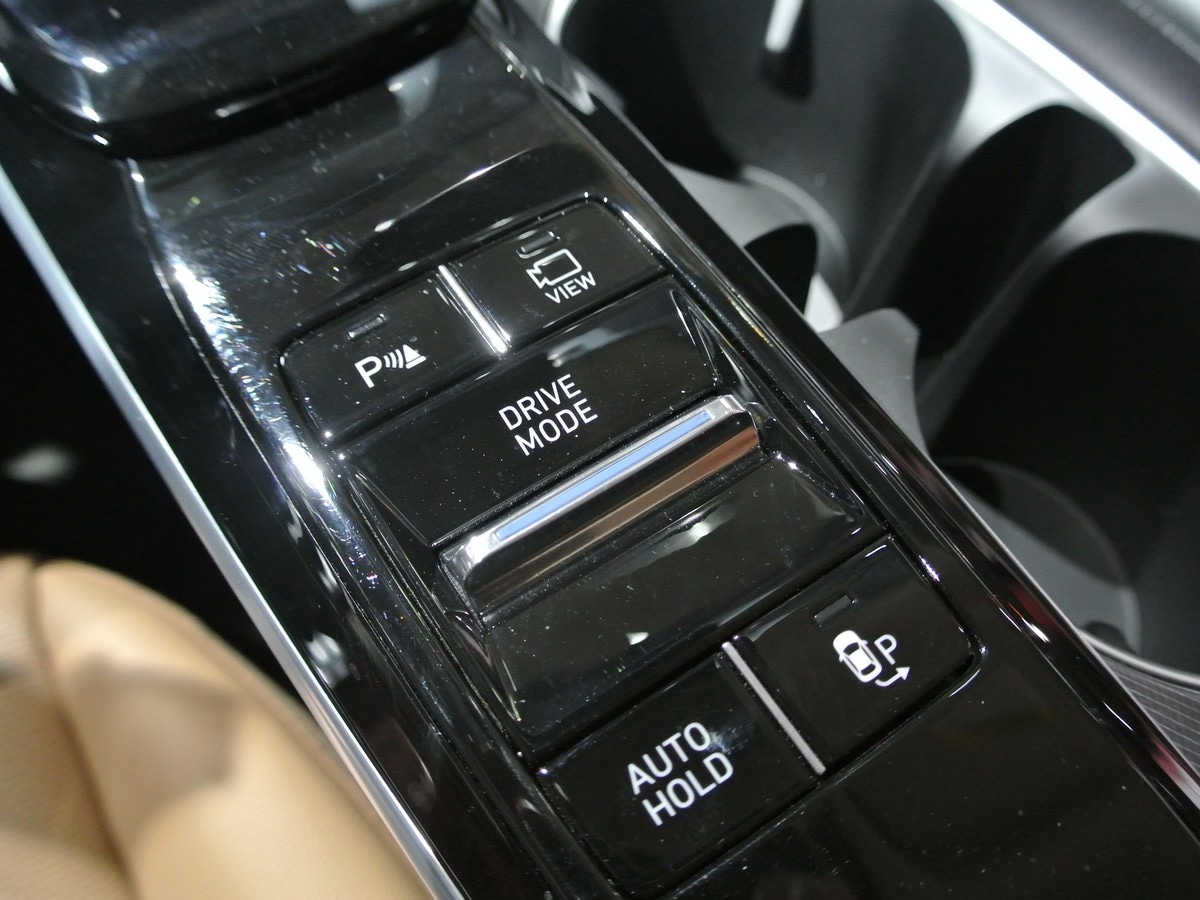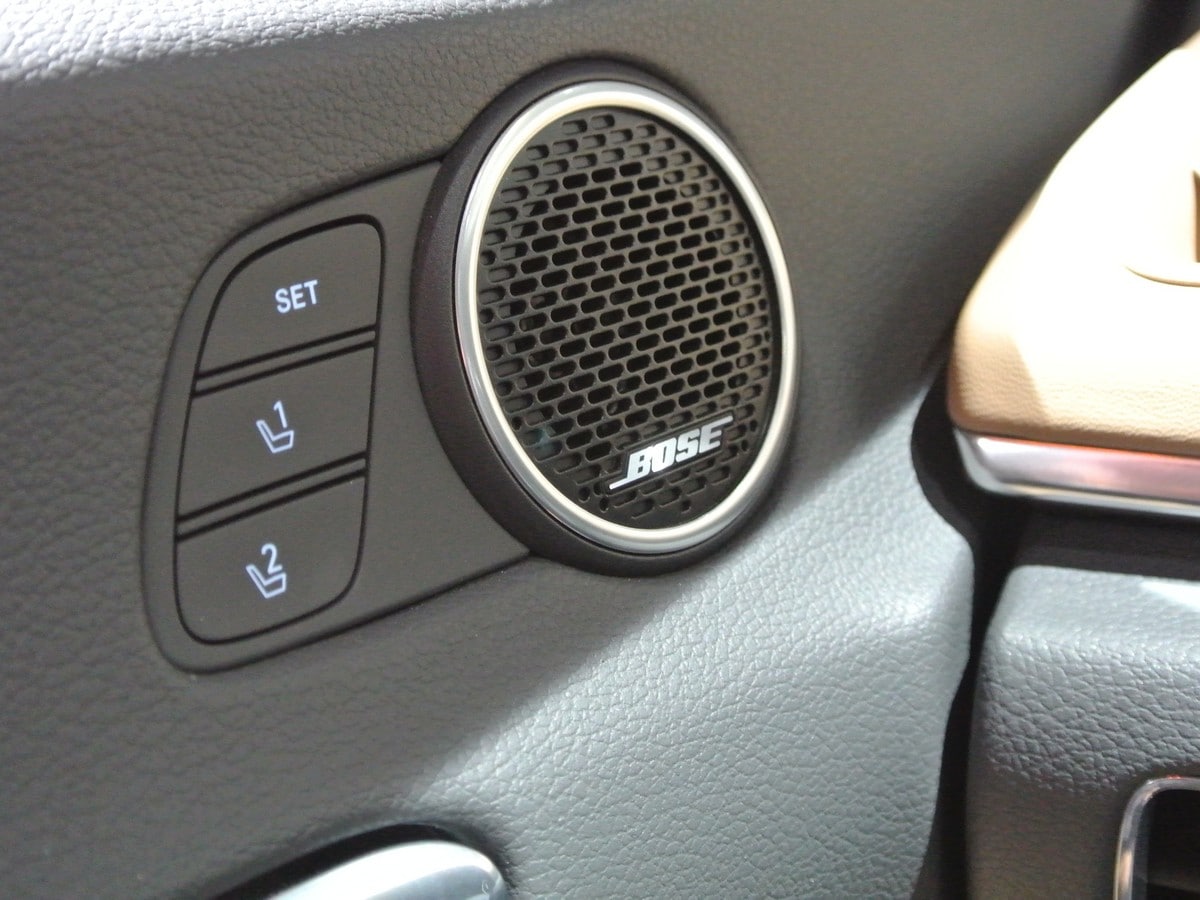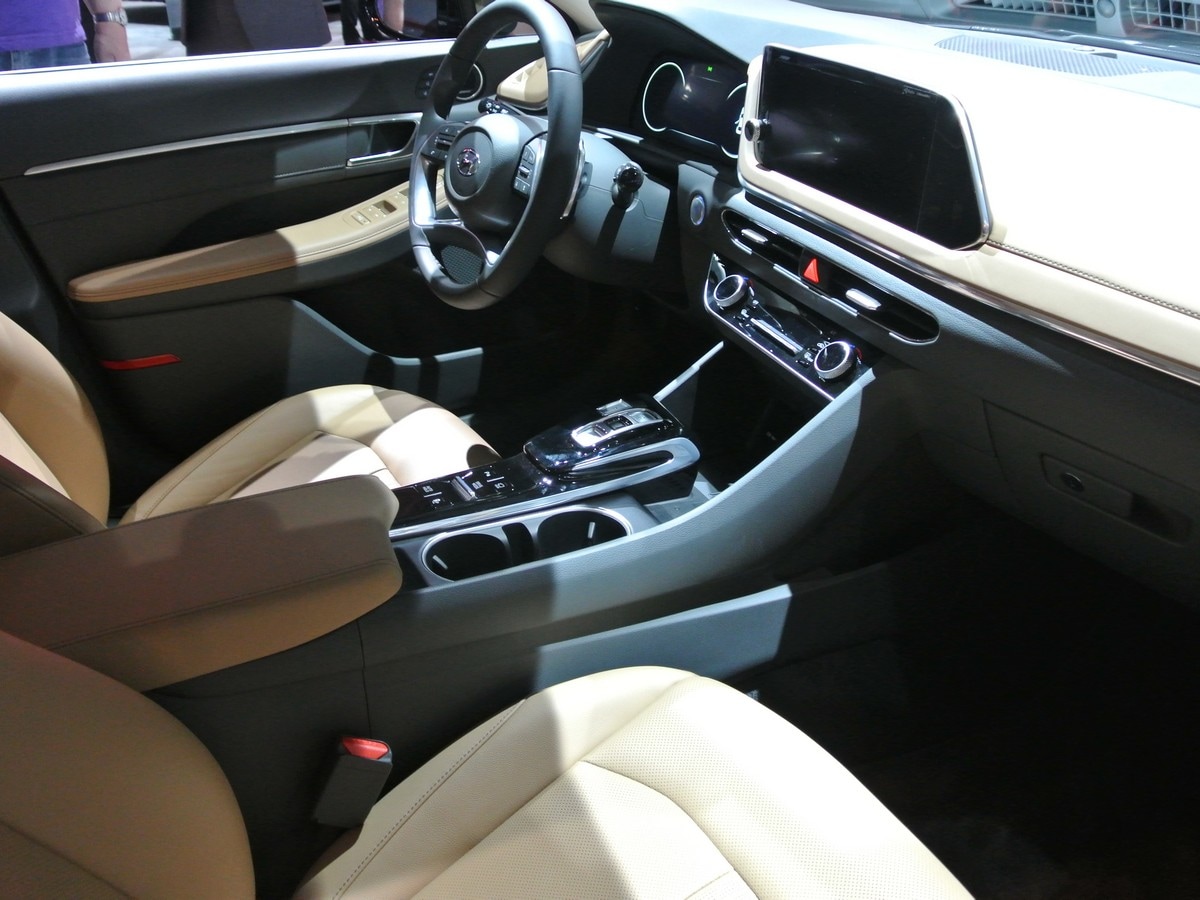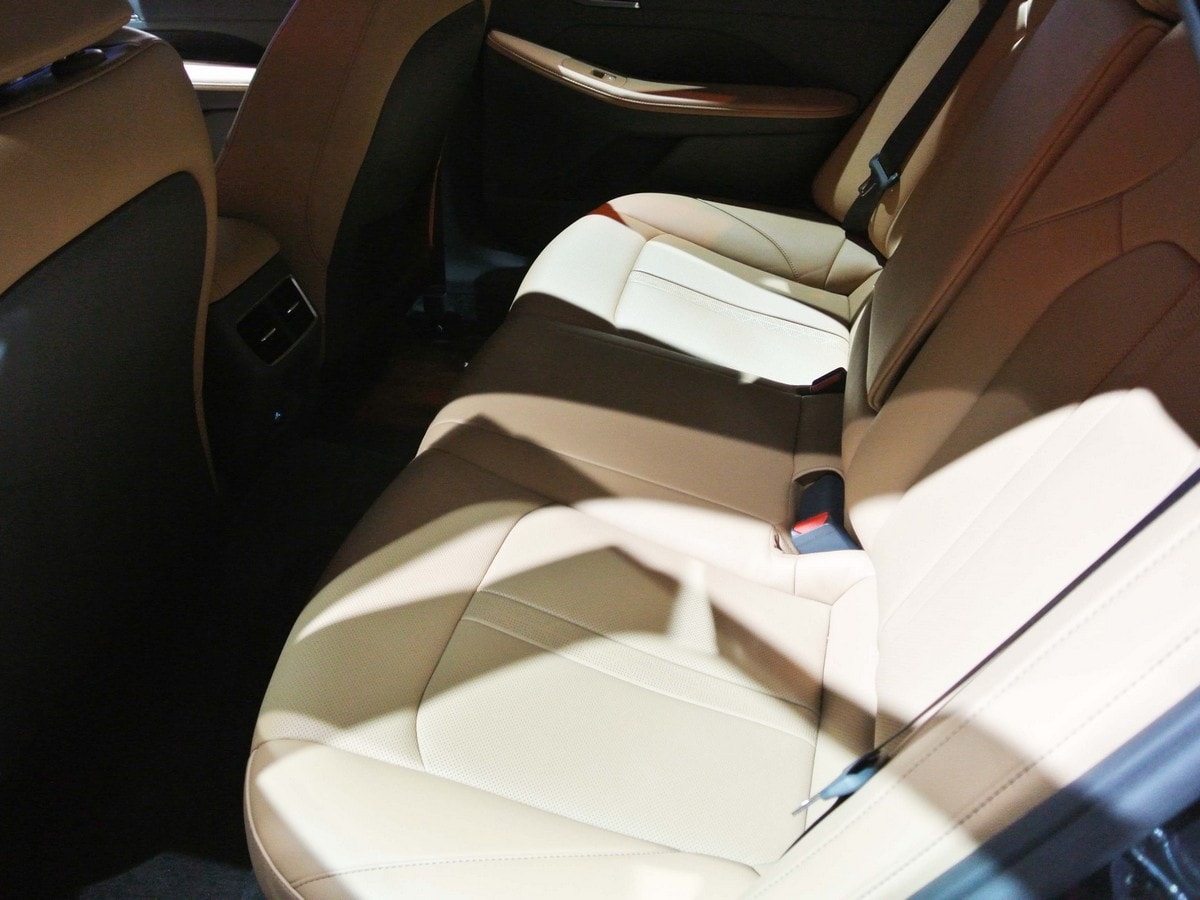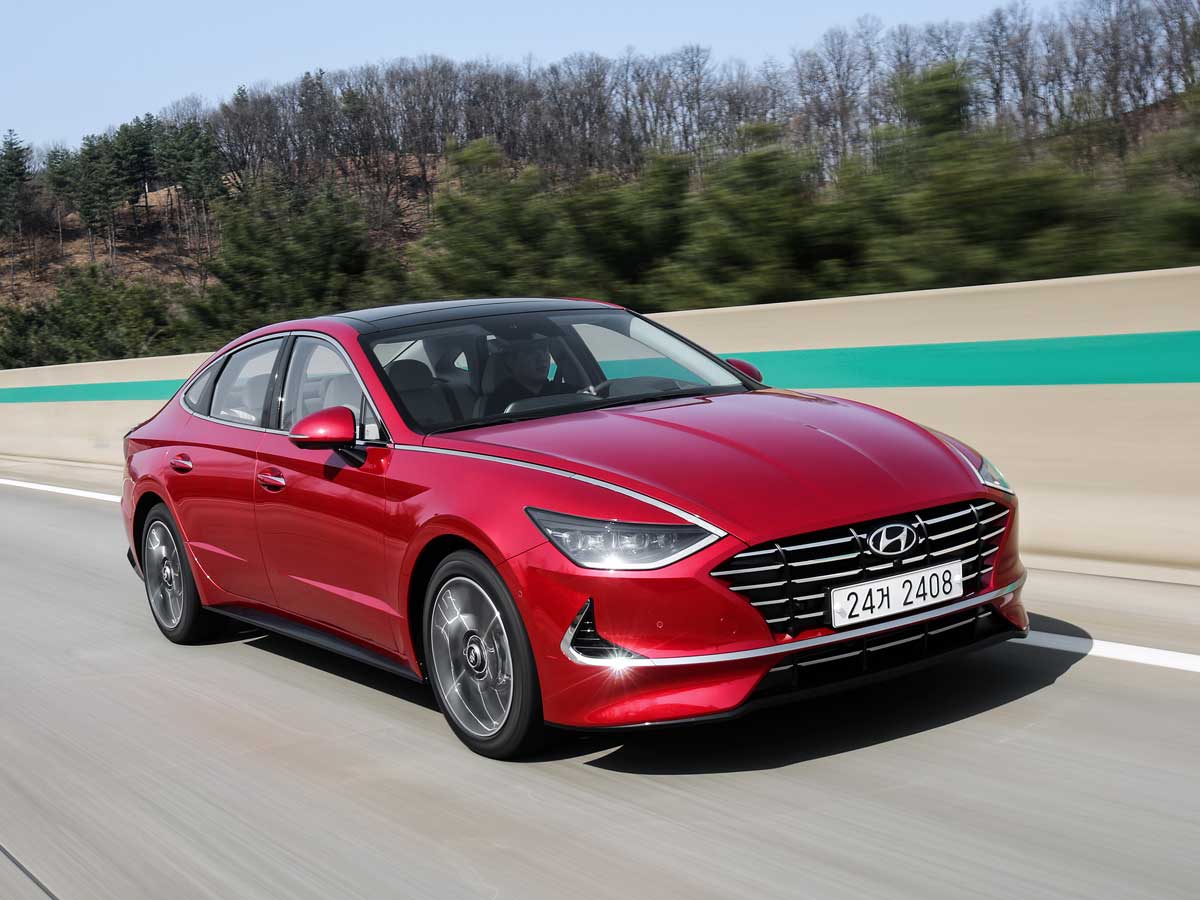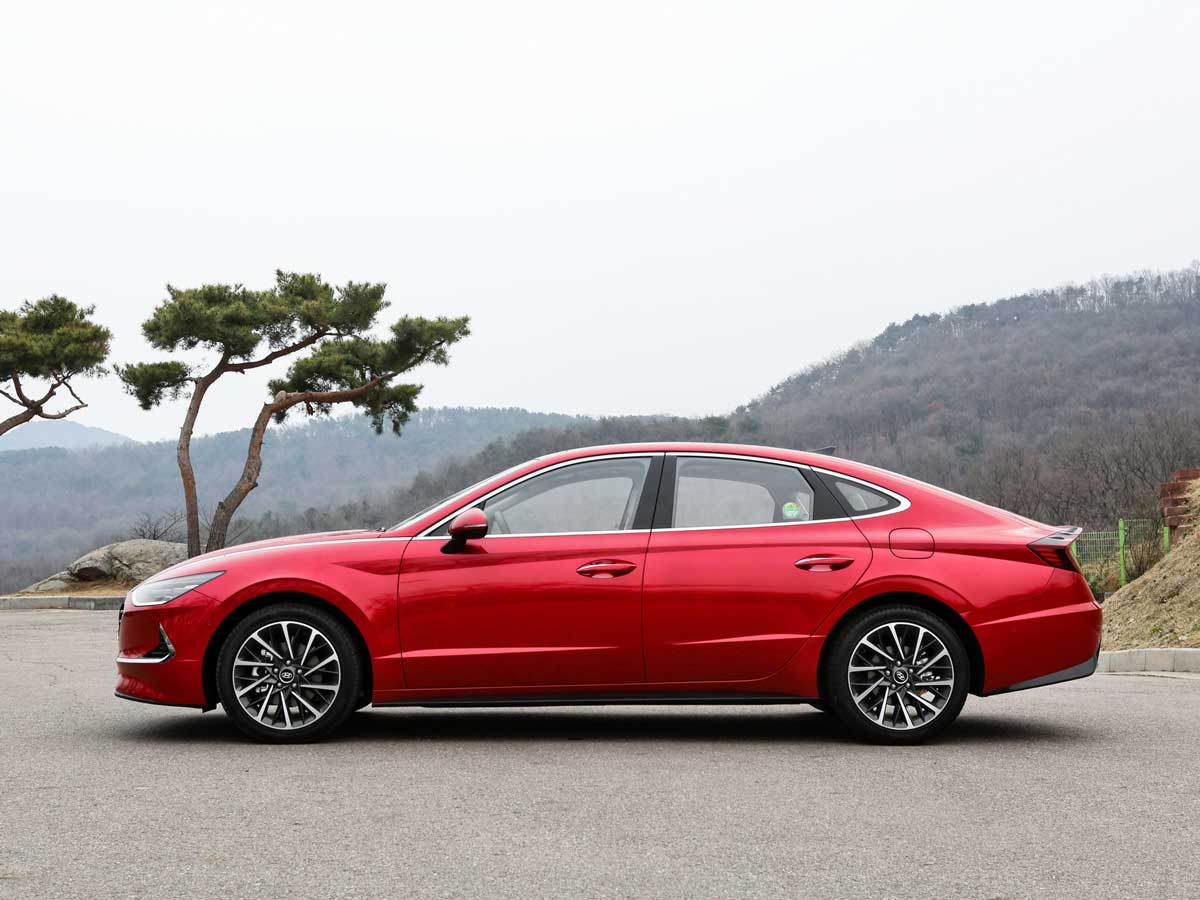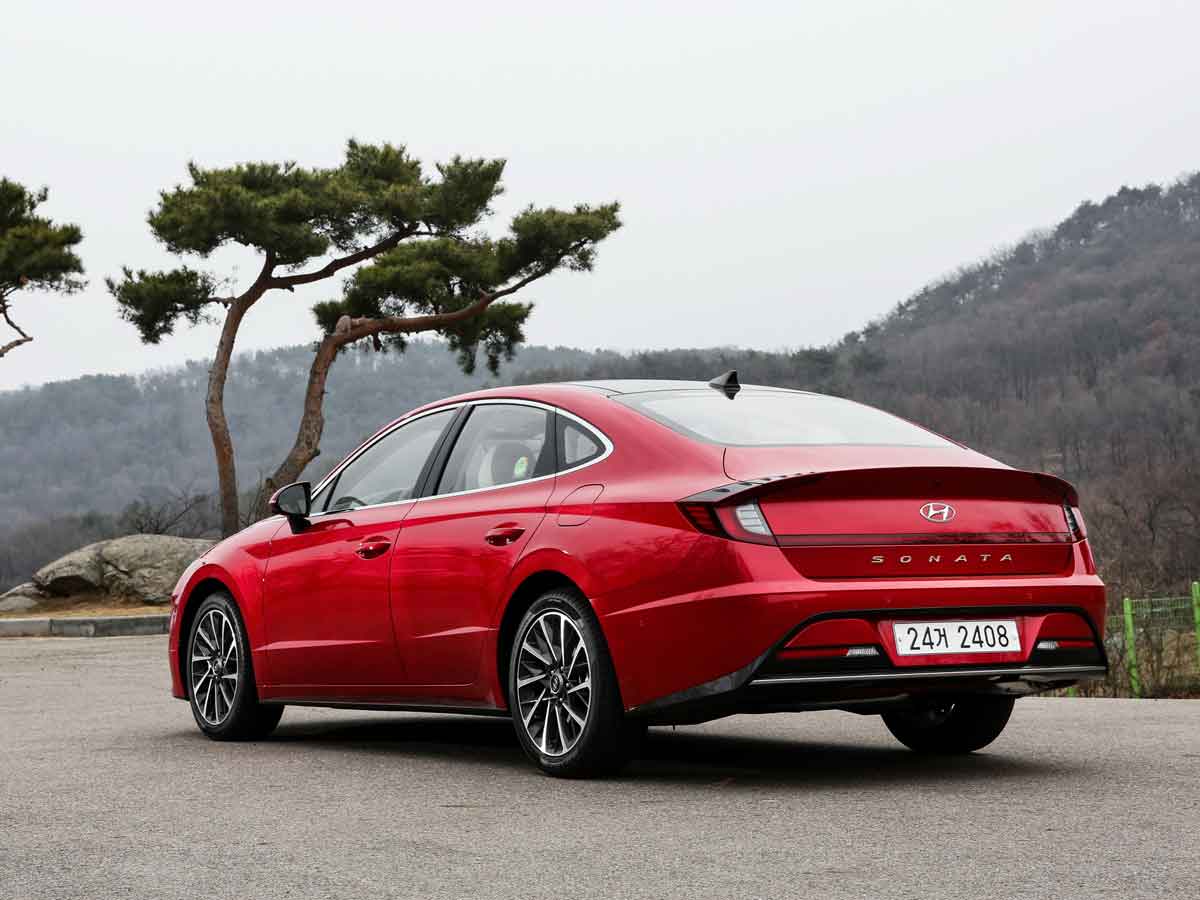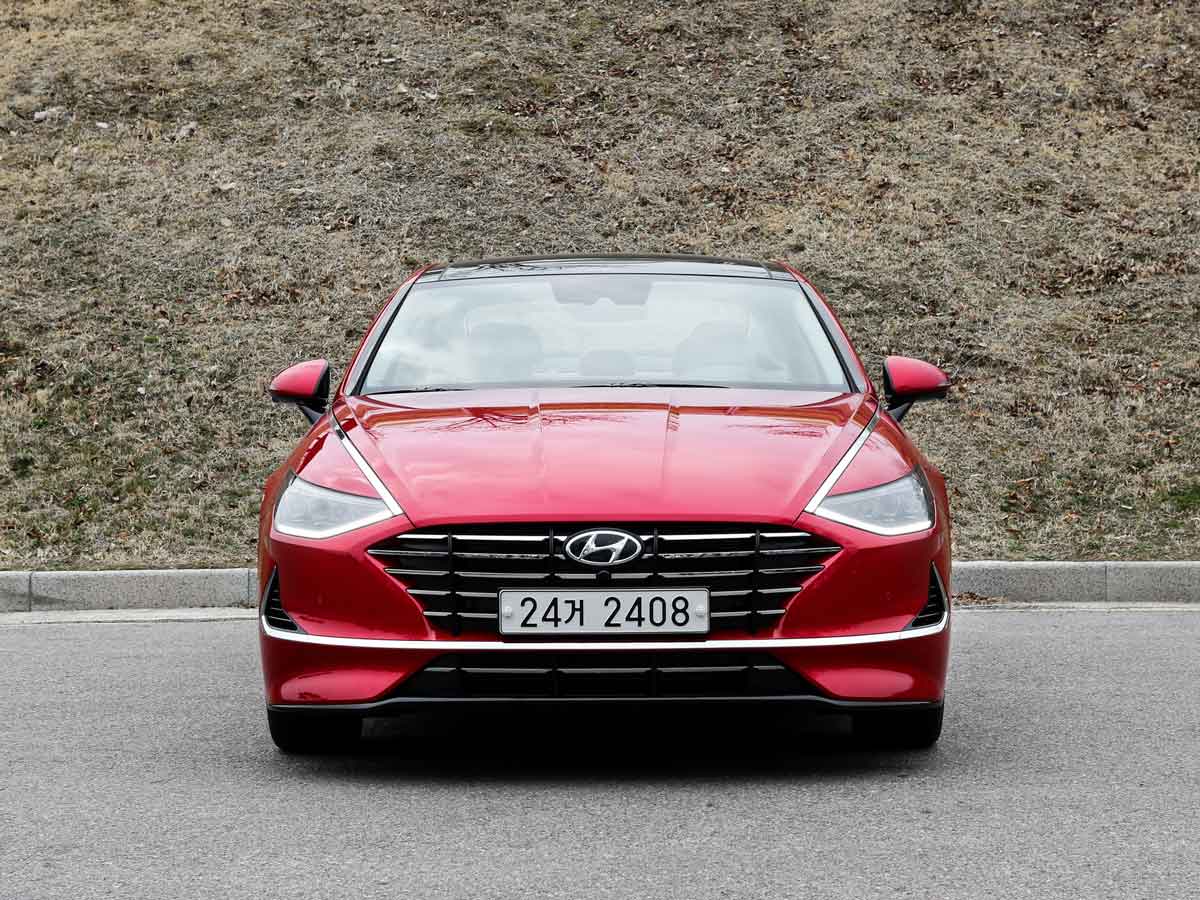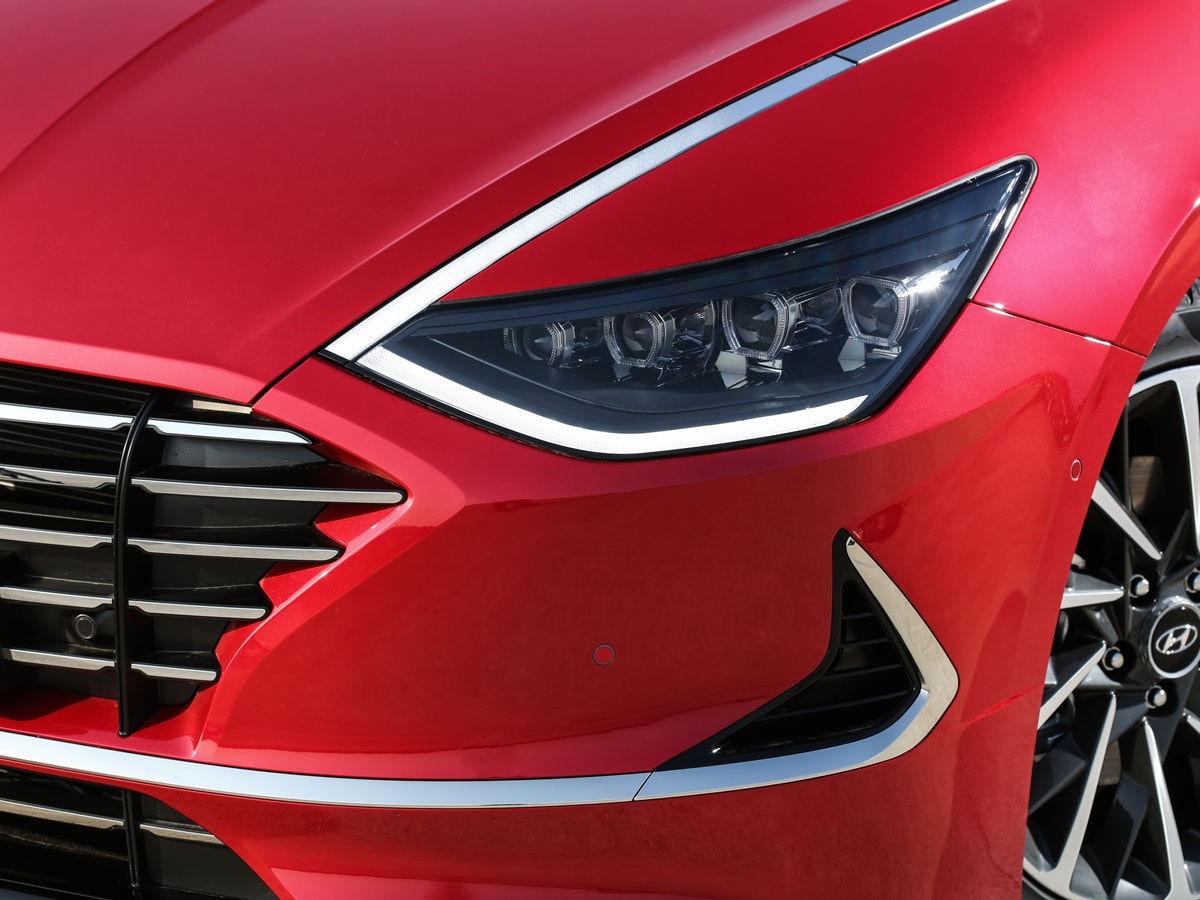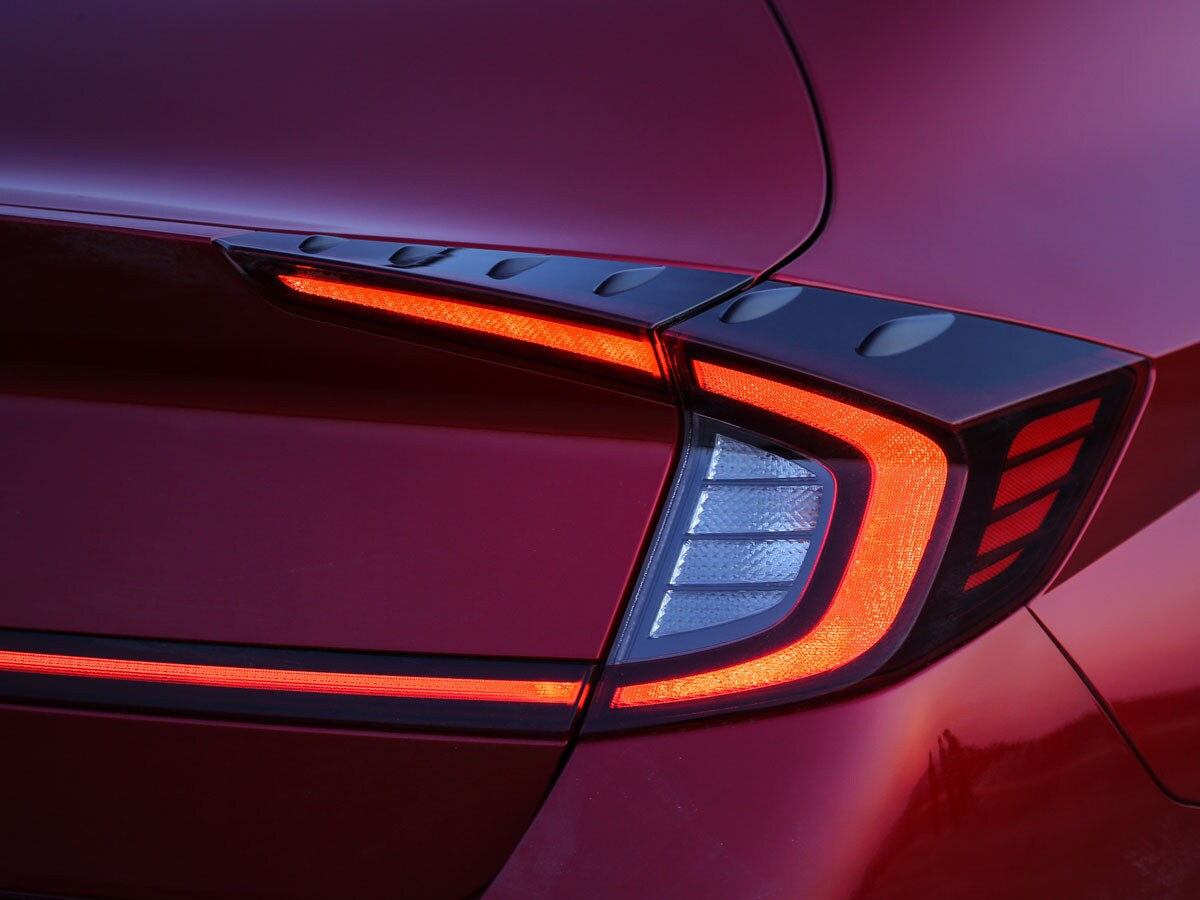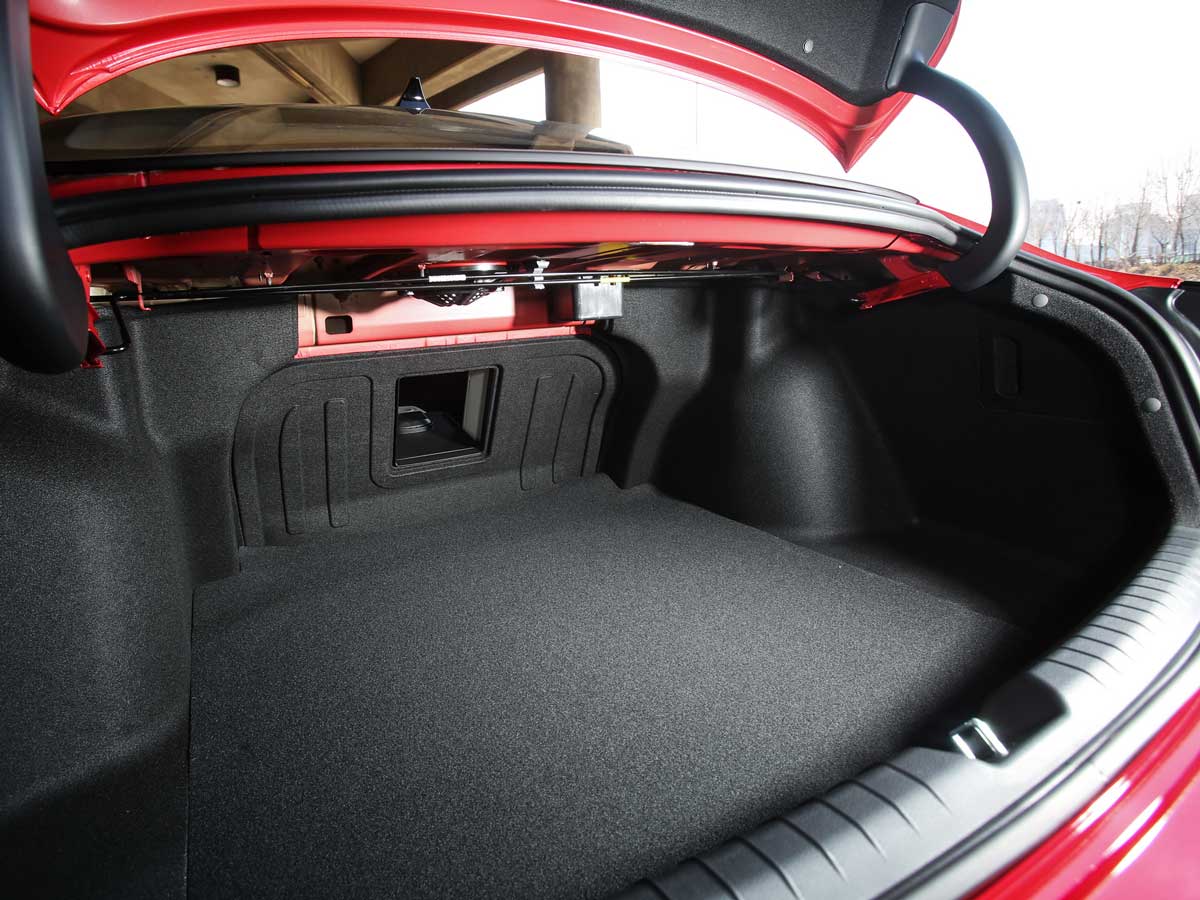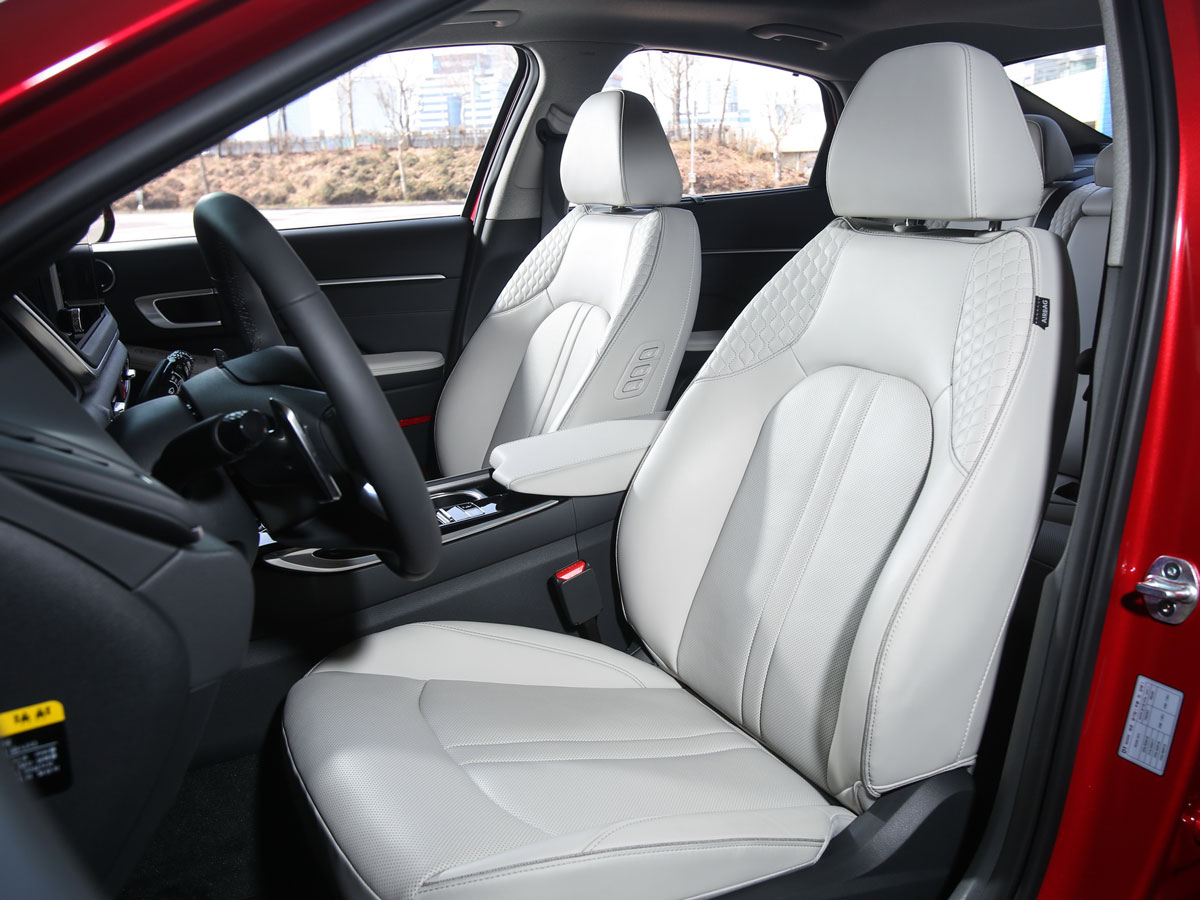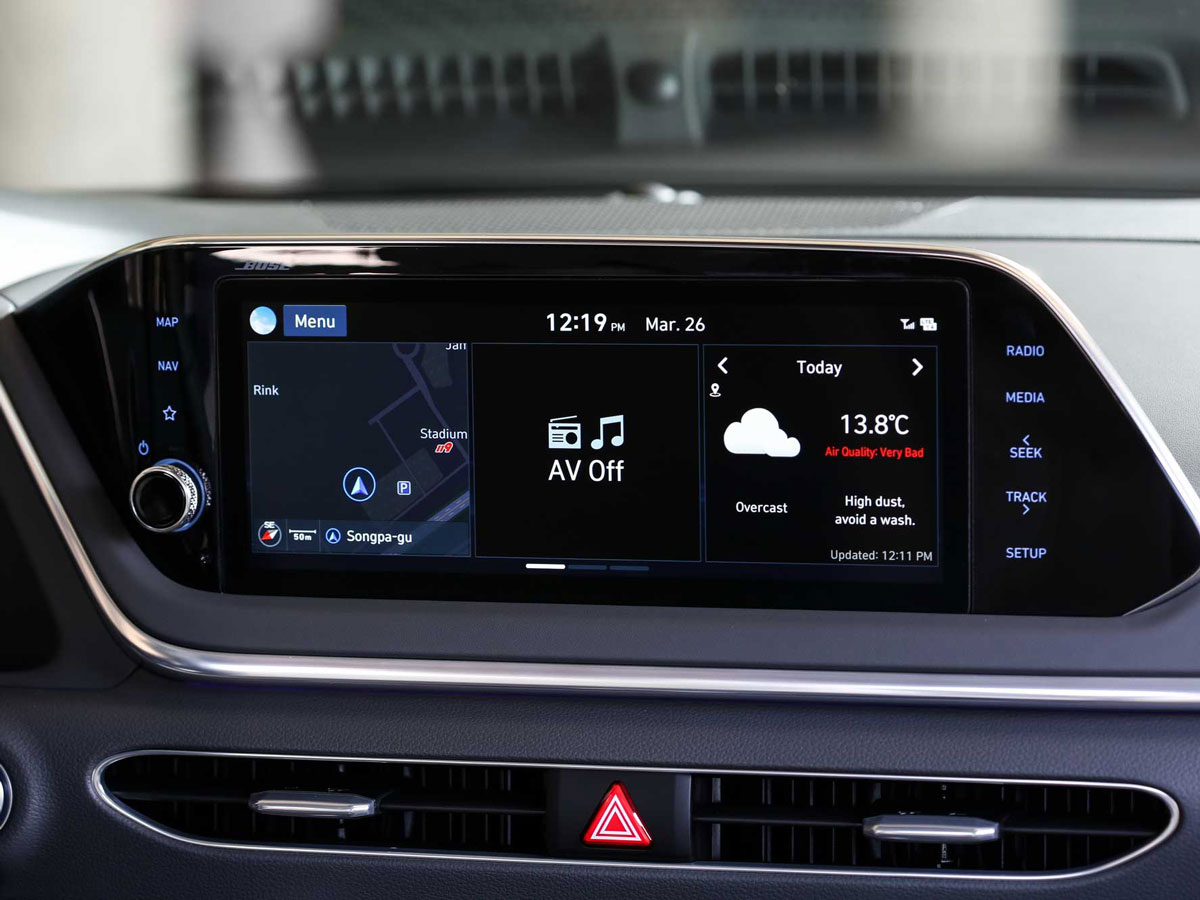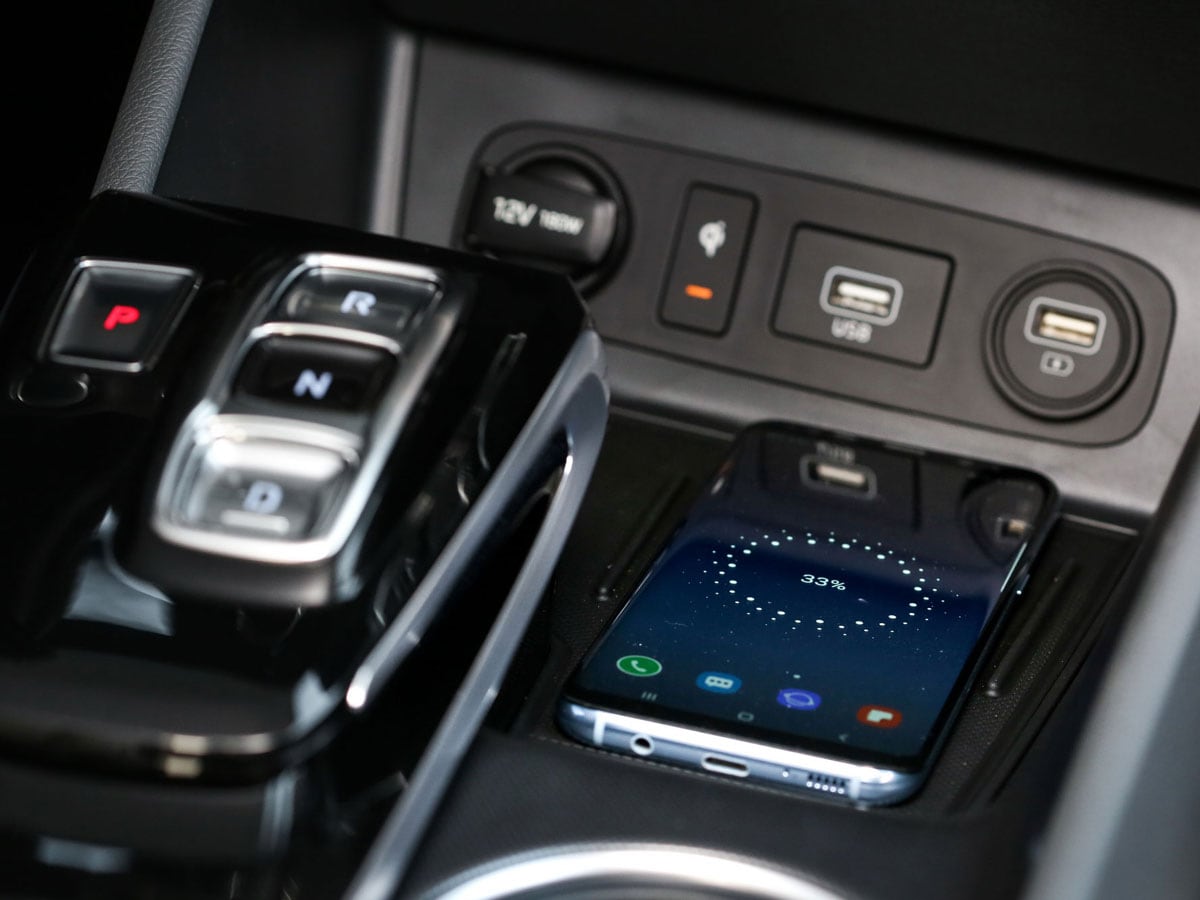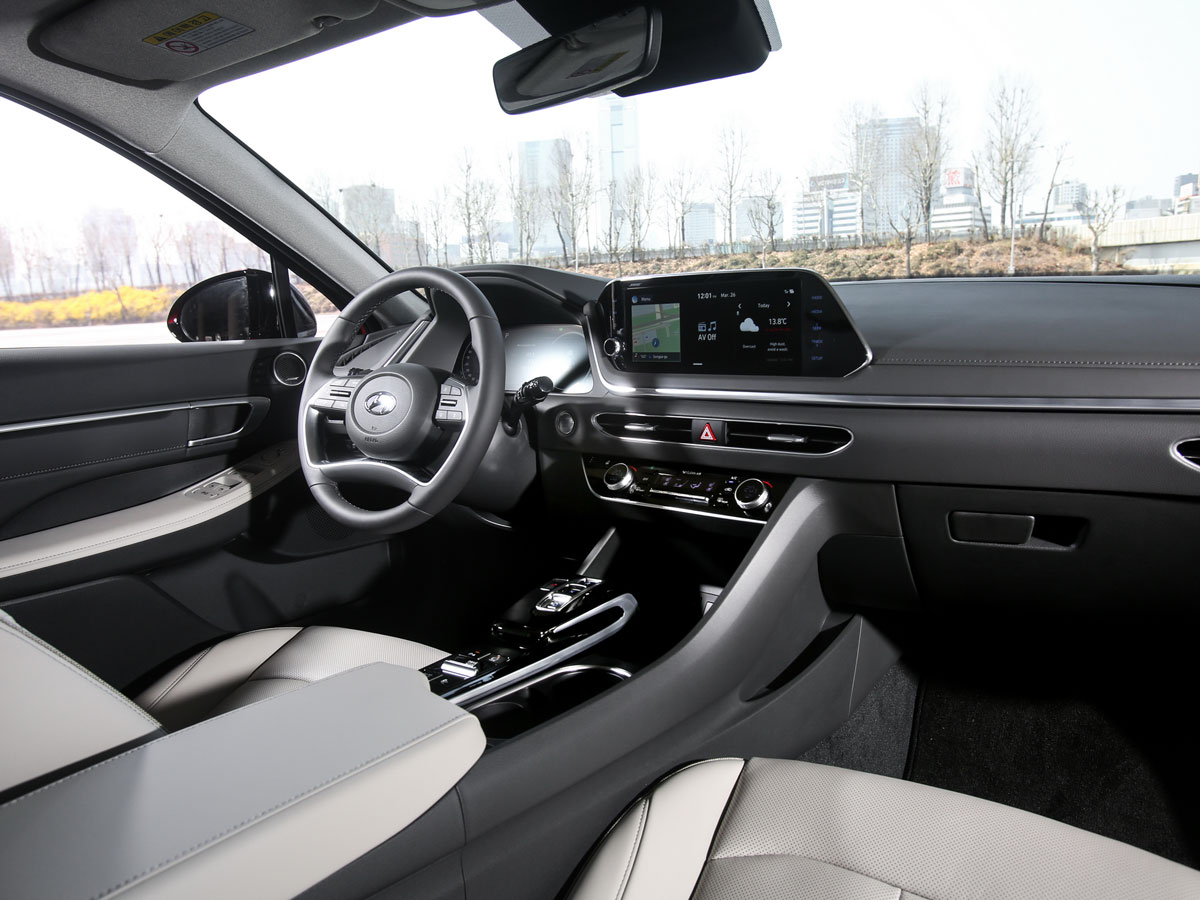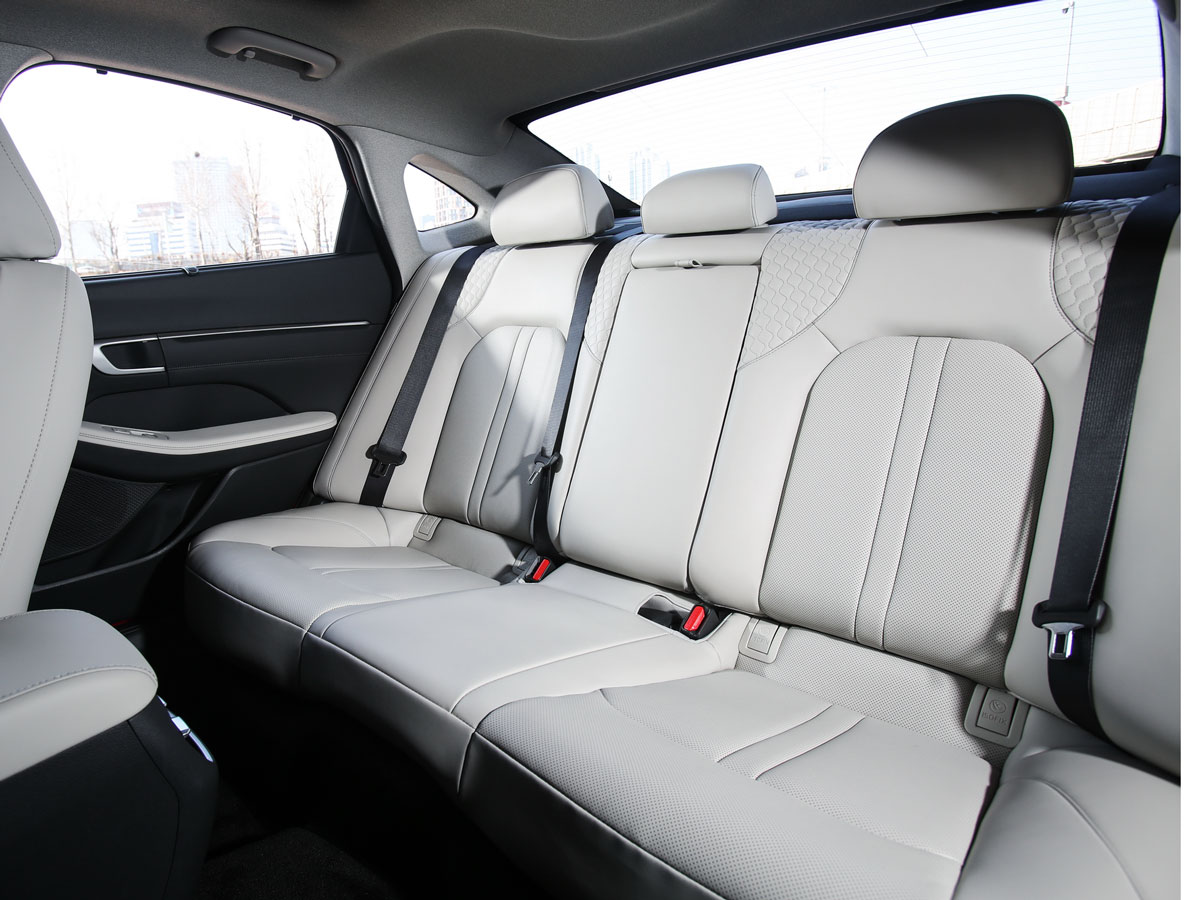- Redesigned inside and out
- 2.5-liter and 1.6-liter 4-cylinder power
- Front-drive with an 8-speed automatic transmission
- Built on Hyundai’s all-new architecture
- Digital key and driverless park assist offered
- Pricing to start at $23,400 plus $930 delivery
- Arriving later this year as a 2020 model
There’s been much talk of the demise of the midsize sedan, but quoting Mark Twain, reports of its death are greatly exaggerated. There are still millions being sold each year and by the looks of the all-new 2020 Hyundai Sonata, there will be plenty more rolling out of dealer showrooms in the future.
To showcase its commitment to the segment, Hyundai gave us two opportunities to drive the latest generation of the Sonata, one in Korea at a special event for World Car Awards jurors and the other at the Montgomery, Alabama assembly plant where it will be built.
Riding on an all-new platform
Arriving in showrooms before the end of the year, the 2020 Sonata rides on a new platform to be shared by several cars and SUVs coming from Hyundai and Kia. A bit longer, lower and wider than the Sonata it replaces, the new car’s platform allows it to be better at absorbing collision energies and preventing impact structures from entering the cabin.
Another plus for the Sonata’s new platform architecture lies in its ability to give exterior designers more latitude. The midsize sedan’s coupe-like profile features a longer wheelbase, a lower stance, and it pushes the front wheels out for a lower front overhang. It’s the shape, however, that will carry much of your final opinions, pro and con. Neutrality is neither expected, nor accepted.
On our group test drive, we took note each time the new Sonata’s LED headlights and daytime running lights appeared in our mirrors. It’s a good, strong face with legit presence. Likewise, when we were following, the LED taillights wrapping around the trunk lid caught our eye more than once. In profile, Hyundai’s new 5-passenger sedan consciously bends light, shadow and reflections. The exterior visual effect ends well shy of splashy and holds together as you walk around the car.
Other notable exterior character moments range from controversial to functionally elegant. Our Instagram post about the one-inch-wide chrome trim strip that runs from the headlights, up the hood, and completely around the window frame drew a vocal mix of comments ranging from love to loathing. The strip is a hat-tip to the 2011 Sonata which featured a similar bit of brightwork. That design is credited with getting the Sonata on the radar screen of a new class of midsize car shoppers for the brand.
Other distinctive touches include the six aero-fins on top of the taillight lenses which subtly strengthen the Sonata’s exterior character. They also contribute to its 0.27 coefficient of drag – a decent number for a midsize sedan.
How much will the 2020 Hyundai Sonata cost?
Available in SE, SEL, SEL Plus and Limited trim levels, the 2020 Hyundai Sonata prices start at $23,400 for the base SE. The SEL models are priced from $25,500 while the SEL Plus carries an MSRP of $27,450. The top line Limited costs $33,300. All prices exclude $930 delivery. The SE and SEL models are equipped with the normally aspired 2.5-liter I4, while the SEL Plus and Limited feature the 1.6-liter turbo 4-cylinder. The previous Sport model has been dropped from the lineup.
Options include a $1,200 Convenience package on SEL models that includes a 12.3-inch LCD instrument cluster, wireless charginging and the Hyundai Digital Key. An $1,850 Premium package, which requires the Convenience option, adds leather upholstery, a heated steering wheel and a 12-speaker Bose premium audio system. Also available are a Panoramic sunroof option for $1,000 and Drive Guidance for $950 that includes a 10.25-inch infotainment screen with navigation, Highway Drive Assist, and thre years of Blue Link Guidance package.
Two new engines
Base models of the 2020 Sonata equipped with that naturally aspirated 2.5-liter 4-cylinder engine make 191 horsepower and 181 lb-ft of torque. Designed primarily to deliver fuel economy, Hyundai is estimating a combined EPA figure of 33 mpg. Upper trim models with the 1.6-liter turbo engine produce slightly less horsepower (180 ponies), but greater torque (195 lb-ft) that makes its full presence felt at a low 1,500 rpm. This gives these models snappier performance at the cost of one or two mpg.
Both engines come mated to an 8-speed torque converter automatic transaxle driving the front wheels. The push-button transmission boasts paddle shifters in the 1.6-liter turbo variants.
We’re happy to report that the powertrain story stops there as in Korea we drove a home-market spec model with a 2.0-liter 4-cylinder matched to a 6-speed automatic that was not particularly impressive.
Driving Impressions
Hyundai has definitely done its homework in the noise, vibration and harshness department. Our initial drive of the prototypes in Korea early in the year revealed some higher noise levels than we are accustomed to in the class. The U.S. versions that we drove in Alabama featured more insulation including laminated front door glass that definitely had an effect providing a quiet and comfortable ride.
For our two laps at Hyundai’s Namyang test track — one in the normal “comfort” driving mode and one with Sport mode selected — we were a given 90-percent U.S.-ready vehicle with the turbocharged 1.6-liter. Within the Hyundai Group facility, the track is called “Biermann’s Nürburgring” as an homage to the company’s head of R&D, Albert Biermann, who once ran BMW’s M division and most recently masterminded the Veloster N, Kelley Blue Book’s 2019 Performance Car Best Buy Award winner. While some elements on the sedan, like the production grille (spotter’s tip: There are different grilles for each engine) and some final performance settings were not completed on our test car, it behaved itself evenly on the track’s sweepers and tight corners, accelerated really well on the lone straight, shifted through gears with extra-smoothness, and slowed with right-now responsiveness from the brake pedal.
In our later drive, we were particularly impressed with the steering feel and response, which had enough heft to communicate what was going on with the front wheels, while not being so heavy as to feel sluggish in response, a feel that has Biermann’s imprint.
We spent our wheel-time behind the 1.6-liter turbo only, the base 2.5-liter won’t be available until after start of production in November. The engine provides good acceleration, both off the line and in mid-range passing. The gearing on the 8-speed automatic did an admirable job of harnessing the quick arriving peak torque. Overall, the Sonata is quiet, comfortable and as satisfying to drive as any car in its class, which includes some formidable competitors like the Honda Accord, Toyota Camry and Nissan Altima.
Cabin comfort
The new Sonata interior is driver-focused, with the center-mounted display screen canted purposefully toward the pilot. Though it rides an inch lower than the previous model, we never felt visually intimidated changing lanes or knowing what was around us, even in Seoul’s heavy rush-hour traffic. In our more open-road jaunt outside Montgomery, we appreciated the lower cowl and large glass area, which provides great all-around visibility.
Inside the 2020 Hyundai Sonata, adults will find comfort and good room in any seat in the house, though a little firmer seats would make more sense over long drives. Despite a high liftover, the sedan’s squared-off trunk space looks ready to hold a mass of luggage. It’s all a matter of personal taste, but we’d argue that the less contrast you choose in your Sonata interior, the more elegant your life will become.
Class of 2020: The New and Redesigned Cars, Trucks and SUVs
Features and safety
At some level, just about every safety and convenience feature is available on the 2020 Hyundai Sonata. What comes standard even at the base level, however, is generous in anybody’s order book. Convenience standouts include auto-on headlights, automatic high-beam assist, and the soon-to-be-standard-everywhere-except-luxury-cars Apple CarPlay and Android Auto compatibility. Safety equipment nearly overflows, and while blind-spot monitoring still doesn’t make the standard features list, smart cruise control, forward-collision warning with automatic braking and pedestrian detection, and lane-following assist definitely do.
Two features only available on the top trim levels deserve to be praised. The first is called “Blind-spot View Monitor,” and if you’re familiar with Honda’s LaneWatch, this setup brings that system up two notches. While the Honda system only shows you video of your right-hand blind spot on a separate center-stack display, the Hyundai cameras will show your left- and right-side blind-spot areas (depending on which turn signal you’re using), and it shows them in place of the speedometer (left) and tachometer (right) on the instrument cluster. The system took no time to get used to and felt more natural than Honda’s.
And then there’s “Remote Smart Parking Assist” (RSPA), a system designed (it seems) for Southern California condo garages – we’re talking narrow parking structures that even a gymnast couldn’t climb out of. If you have RSPA, you can aim your Sonata into the tight space, then exit and stand clear. Next, using arrows on the Sonata key fob, you can forward your car into the tight space and shut it off. When the time comes for you to leave, you simply reverse the procedure and make peace of mind your servant.
Hyundai is also using the 2020 Sonata to launch its digital-key technology which will allow you to access and start the vehicle with your Android smartphone. The technology also allows the owner to share the car, either simple access or full driving privileges, through an app.
In conclusion
The 2020 Hyundai Sonata has a tough row to hoe: Beating the Honda Accord and Toyota Camry at their specialties – particularly in a world where midsize sedans don’t appear to be a growth market. Even though the word “value” is a rare sight in Hyundai literature and speeches these days, the company still gives you a 10-year/100,000-mile powertrain warranty. These days, however, that’s not enough, and Hyundai’s historic features-for-dollar-gap advantage is closing.
On the other side of the equation, though, Hyundai’s resale-value graph looks healthier every year. Pricing is still a long ways away, but if this new Hyundai Sonata continues to keep its cost below primary competitors, comparison tests and car shopping could get very interesting by the end of the year.
2020 Hyundai Sonata SE
2.5-liter 4-cylinder engine
8-speed automatic transmission
16-inch alloy wheels
LED headlights and LED daytime running lights
Cruise control
Tilt-and telescoping steering wheel
Bluetooth hands-free phone and audio
Driver’s-side auto down/up safety window
Cloth seating surfaces
Illuminated ignition cylinder
6-way adjustable driver’s seat
4-way adjustable passenger seat Safety
Forward Collision Avoidance Assist w/ Pedestrian Detection
Advanced Smart Cruise Control
Automatic High Beam Assist
Lane Keep Assist System
Lane Follow Assist
Driver Attention Warning
Rearview camera w/ dynamic guidelines
8-inch infotainment display
Android Auto / Apple CarPlay
USB charge port
12-volt power point
2020 Hyundai Sonata SEL
Blind Spot Detection w/Rear Cross-traffic Alert
17-inch Hyper silver alloy wheels
Sport front fascia
Sport rear fascia
Twin-tip muffler
Mesh grille with lower intake
Heated side mirrors
Proximity key entry w/ push-button start
Hands-free Smart Trunk Release
4.2-inch color LCD trip computer
Leather-wrapped steering wheel & shift knob
Leatherette interior
Liquid chrome interior accents
Auto down/up front-passenger window
8-way power driver seat
Dual automatic temperature control
2nd-row air vent
Heated front seats
2nd-row USB charge port
HD radio
SiriusXM satellite radio
Blue Link Connected Car Services
2020 Hyundai Sonata Limited
1.6-liter turbocharged 4-cylinder engine
8-speed automatic transmission with paddle shifters
Reverse automatic emergency braking
18-inch alloy wheels
Michelin or Pirelli tires
Leather seating surfaces
Memory outside mirrors
Power-adjustable passenger seat
Ventilated front seats
Leatherette-wrapped dashboard upper
Ambient lighting
Color head-up display
Front & Rear parking sensors
Around View Monitor
Remote Smart Parking Assist
2020 Hyundai Sonata SEL Plus
1.6-liter turbocharged 4-cylinder engine
8-speed automatic transmission with paddle shifters
18-inch alloy wheels
Michelin or Pirelli tires
Full LED taillights
Auto-dimming mirror w/ HomeLink
Combination cloth / leatherette seat
Leather-wrapped steering wheel
Aluminum pedals
2nd-row adjustable headrests
12.3-inch LCD instrument cluster
Wireless device charging
Hyundai Digital Key
Panoramic sunroof
LED interior lights
Navigation with 10.25-inch touch-screen display
Bose audio
Highway Driving Assist
Options:
Convenience Package
12.3-inch LCD cluster
Hyundai Digital Key
Wireless device charging
Auto-dimming mirror w/ HomeLink
Leather-wrapped steering wheel
2nd row air vent and USB charger Premium Package
Requires Convenience Package:
Bose audio
Leather seating surfaces
Heated steering wheel
Standalone Options
Drive Guidance
Navigation with 10.25-inch touch-screen display
Highway Drive Assist
Panoramic sunroof
LED interior lights
2020 Hyundai Sonata Photos
